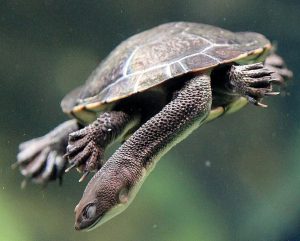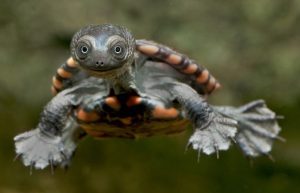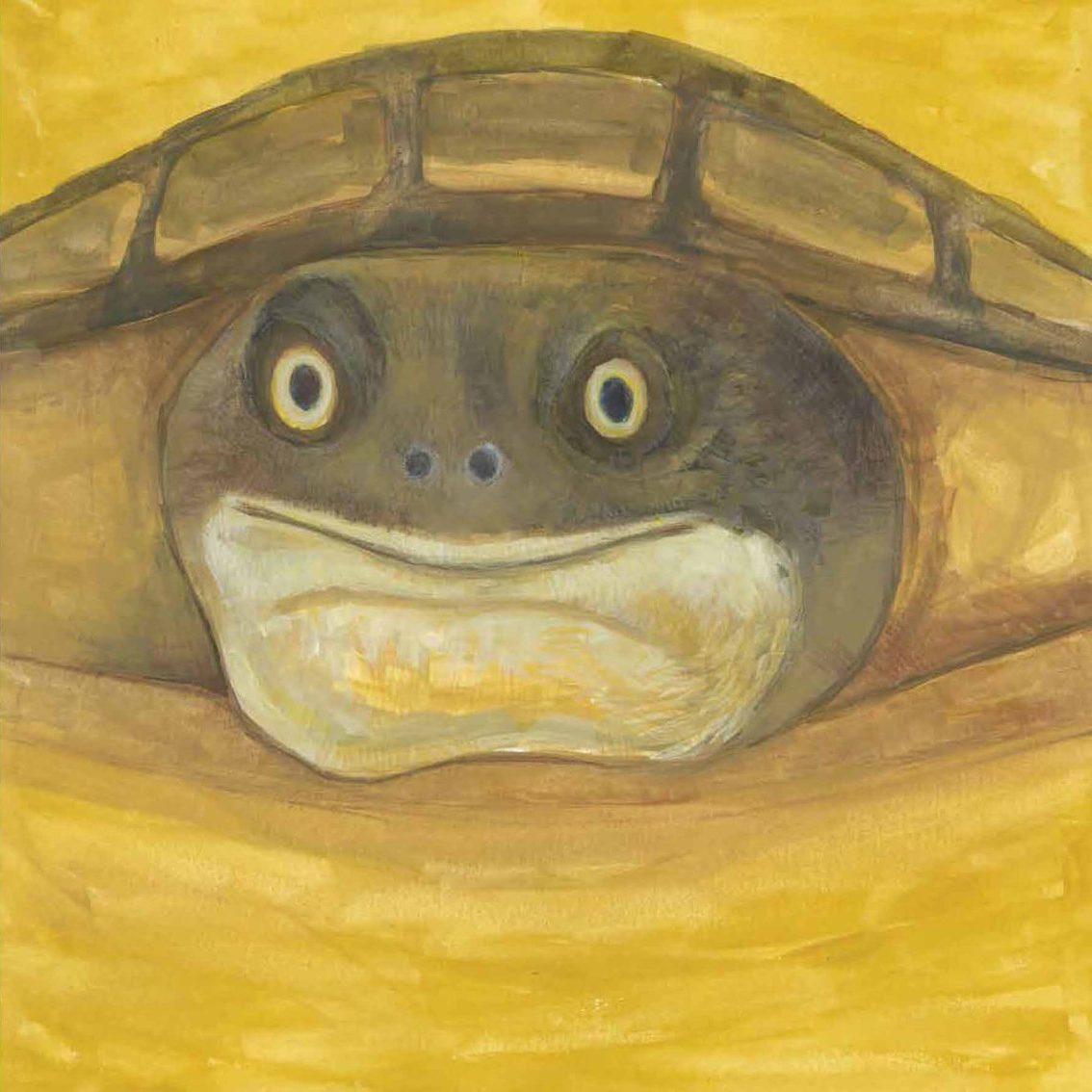I am of the turtle species with the scientific name of Chelodina longicollis, commonly known as the Eastern Long-necked turtle. I, Rodney, am proud to belong to the subfamily Chelodininae, which is native to Australia and New Guinea. My species is known for an elongated neck, which is a really cool adaptation for my pretty aquatic lifestyle. 
We adult Eastern Long-necked turtles grow to an average size of 20-30cm, with males, like me :), being slightly larger. We have a dark olive-green to brown shell (carapace) with occasional black or yellow markings, while our undersides (the plastron) is yellow. When we are babies (hatchlings) we have a similar coloration to adults with the addition of a serrated band running along our shell that fades as we turn into an adult. Our characteristic long neck measures about two-thirds to three-quarters the length of our shell and is a unique adaptation that helps us to breathe while submerged. Kind of like a built-in snorkel!
We Eastern Long-necked turtles are found throughout eastern and southeastern Australia. We live in a range of freshwater aquatic ecosystems, including rivers, streams, swamps, and billabongs. Our favourite places to live have a soft, muddy bottom where we can easily burrow and hide. We are not fussy and are quite happy to live in either natural or artificial water bodies.

We are a carnivorous species that feeds on small aquatic animals. We love snails, worms, insects, tadpoles, and small fish. Me? I also love all the wonderful tidbits Barbara comes up with for me. I am one very lucky guy. When I was a baby (hatchling) I ate a range of different foods, like aquatic plants, algae, and small invertebrates.
We are active during the day and love to bask by the water’s edge. In the wild we also like to burrow in the mud of a river or riverbank to avoid predators or hibernate when the waters dry up.
My species is listed as ‘Least Concern’ by the International Union for Conservation of Nature (IUCN) Red List. They say that there are more than 42,100 species that are threatened with extinction around the planet, and there are quite a lot of beautiful turtles in that list. Luckily, My species is not among them, but my wild friends do still have to live with the threats of habitat loss and fragmentation, pollution and diseases. I, Rodney, count myself very lucky to be so looked after by Barbara.
